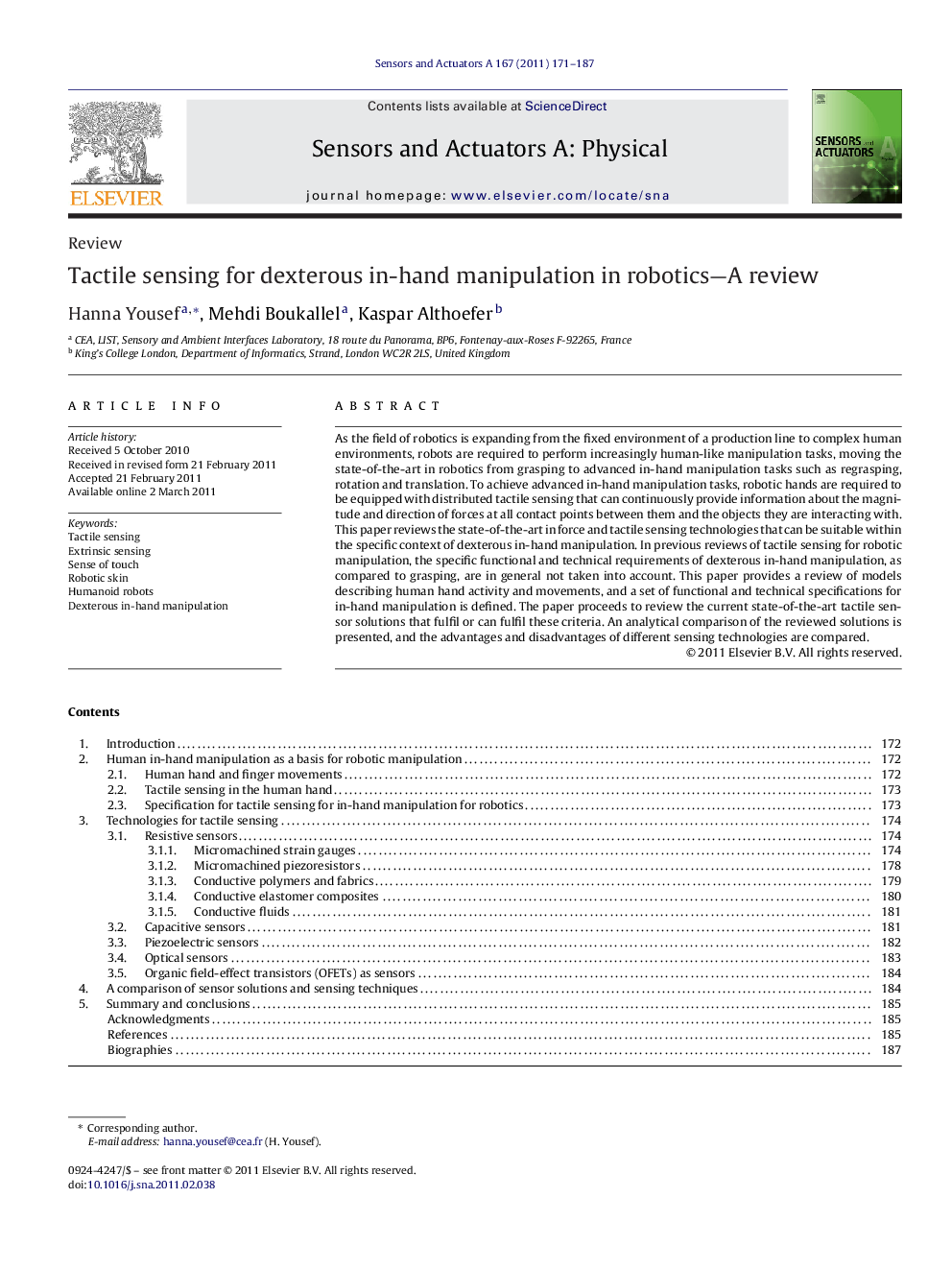| Article ID | Journal | Published Year | Pages | File Type |
|---|---|---|---|---|
| 738117 | Sensors and Actuators A: Physical | 2011 | 17 Pages |
As the field of robotics is expanding from the fixed environment of a production line to complex human environments, robots are required to perform increasingly human-like manipulation tasks, moving the state-of-the-art in robotics from grasping to advanced in-hand manipulation tasks such as regrasping, rotation and translation. To achieve advanced in-hand manipulation tasks, robotic hands are required to be equipped with distributed tactile sensing that can continuously provide information about the magnitude and direction of forces at all contact points between them and the objects they are interacting with. This paper reviews the state-of-the-art in force and tactile sensing technologies that can be suitable within the specific context of dexterous in-hand manipulation. In previous reviews of tactile sensing for robotic manipulation, the specific functional and technical requirements of dexterous in-hand manipulation, as compared to grasping, are in general not taken into account. This paper provides a review of models describing human hand activity and movements, and a set of functional and technical specifications for in-hand manipulation is defined. The paper proceeds to review the current state-of-the-art tactile sensor solutions that fulfil or can fulfil these criteria. An analytical comparison of the reviewed solutions is presented, and the advantages and disadvantages of different sensing technologies are compared.
